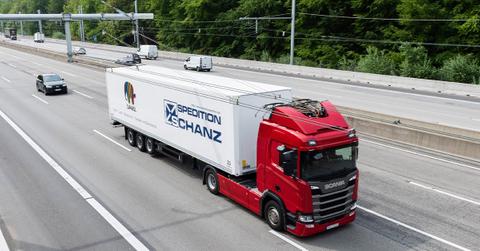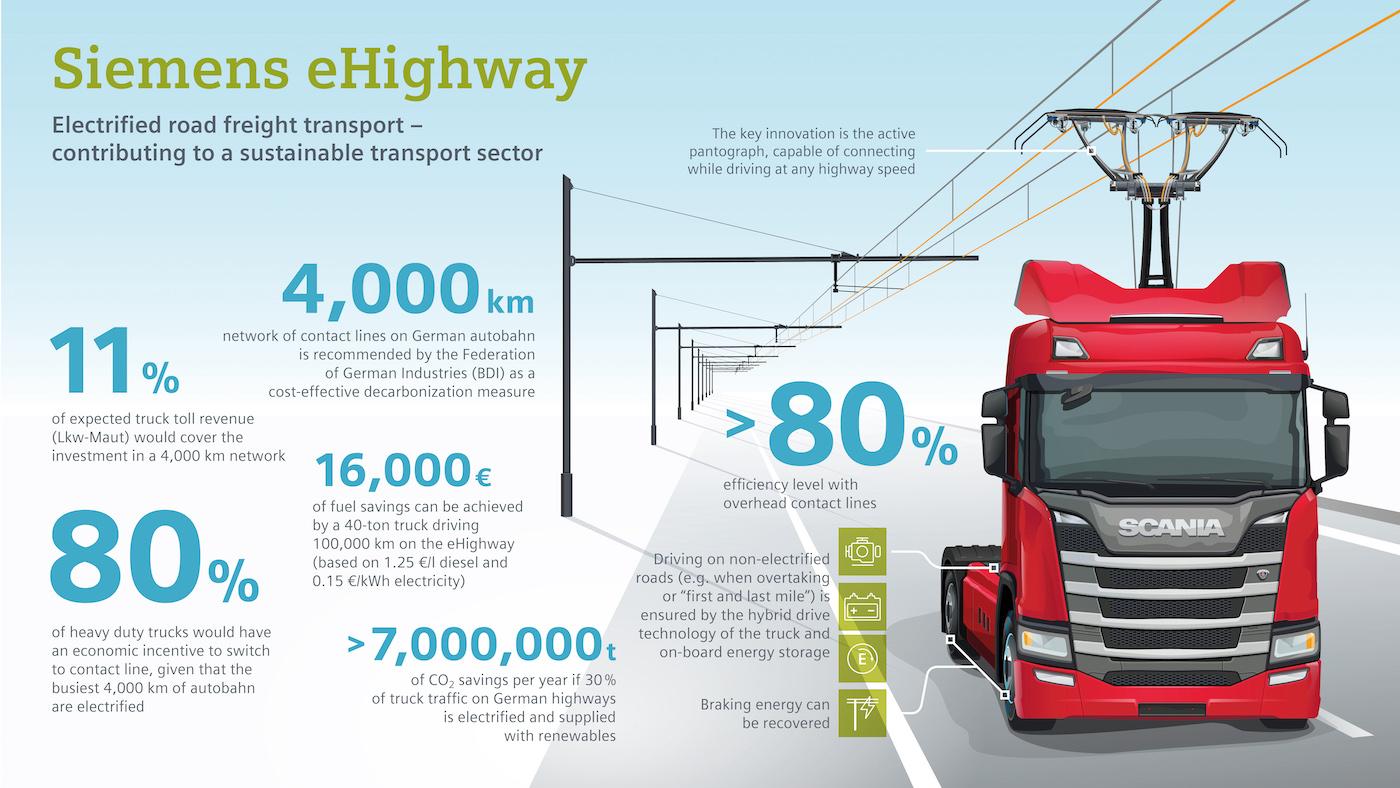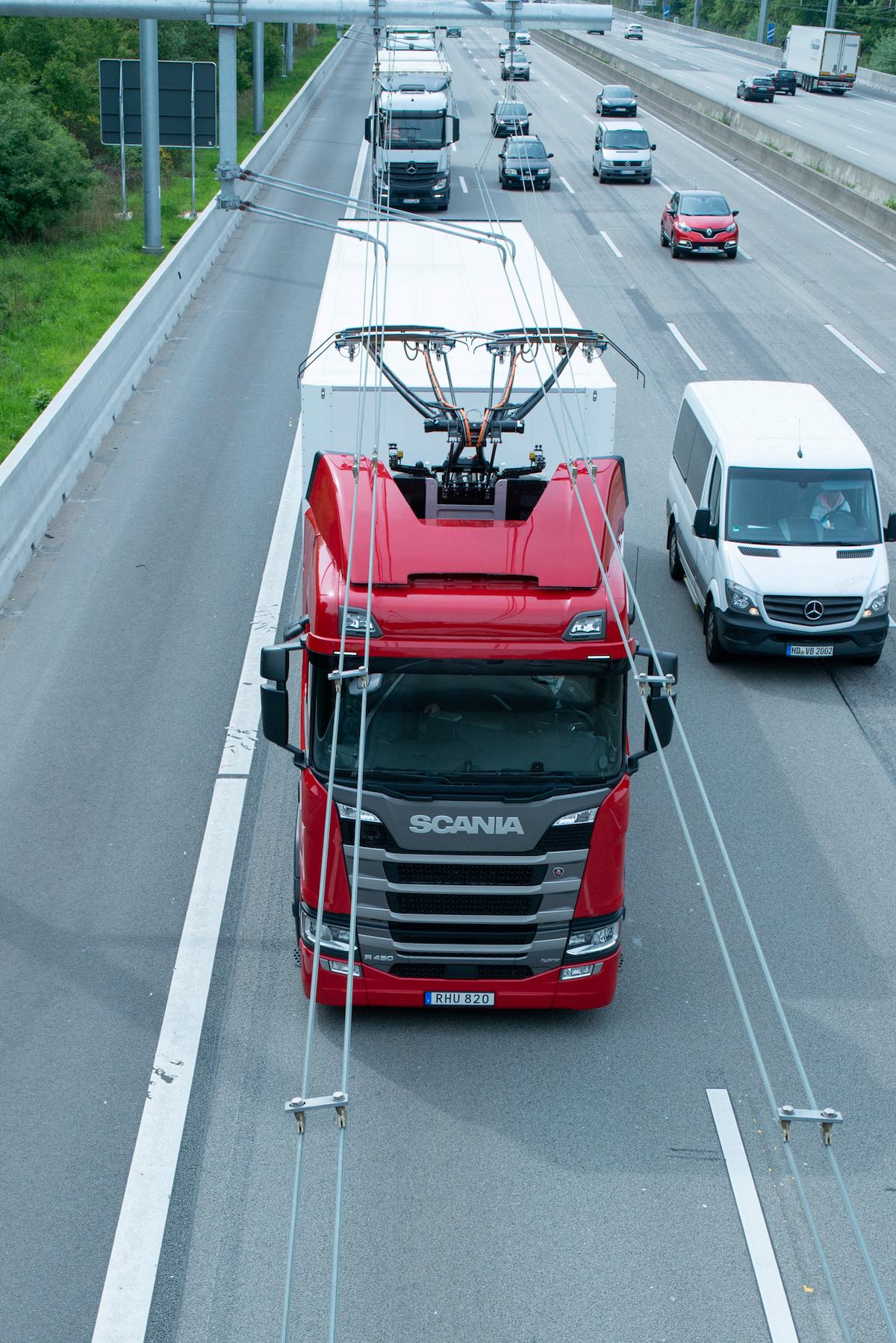Germany's New eHighway Can Charge Hybrid Trucks As They Drive
We'd love to see this everywhere!
Updated May 8 2019, 4:31 p.m. ET

Pretty much the only consistent complaint you hear about driving an electric vehicle long distances is that charging can be a bit inconvenient. Not only are chargers less widespread than gas stations in some areas, but it takes longer to fill up your car with electricity than with gasoline. That doesn't sound like a recipe for an efficient day's work when it comes to truck driving — but the "eHighway" in Germany is working to fix that.
Germany's Environment Ministry partnered with engineering company Siemens to develop overhead power lines that charge trucks as they drive down the highway. The program has been in development since 2012, and it finally publicly opened on Tuesday, May 7 on a 10-kilometer stretch (about 6.2 miles) of the Autobahn, Germany's highway system. The eHighway is part of the Environment Ministry's program ELISA (which stands for Electrified Innovative Heavy Traffic on the Autobahn).
Here's how the system works, according to CNN, overhead electrified lines were installed above the highway, and a group of hybrid trucks were outfitted with specific equipment mounted on their roofs. The moment the trucks merge onto the highway, the equipment on their roofs sense the the overhead lines and connect with them, and will stay connected as long as the truck is on that road. Also, once the trucks connect, they run entirely on electric power for the rest of their time on the eHighway.

According to Siemens, a 40-ton truck can save 15,000 euros (about $16,800) on a 100,000-kilometer (62,137-mile) drive. Additionally, the eHighway system is twice as efficient as a typical truck's internal combustion engine. Not only will it reduce the environmental footprint of the trucks who drive on it, but it will also reduce air pollution that gas-powered trucks emit, and it will contribute to the "decarbonization of the transport sector," Siemens says.
While this is the first eHighway in Germany, it is not the first in the world. In April 2018, 2 kilometers (about 1.2 miles) of electrified road in the Stockholm, Sweden area publicly opened, The Guardian reported at the time. Instead of using overhead lines, the center of the road was outfitted with an electric rail. Similar to Germany's invention, electric and hybrid cars and trucks driving in Sweden need to have a device outfitted to the underside of their car. When drivers drive directly above the electric rail, their car will attach and get charged.
Not to mention, Siemens has not only been testing the eHighway in Germany. In November 2017, Siemens tested the eHighway out in Los Angeles — so perhaps the U.S. will see an eHighway of its own in the near future.

With the success of this new technology, you might be wondering why electronic highways are not being installed all over the world. Well, there's a pretty simple answer to that: it's costly. According to Business Insider, Germany spent 14 million euros (about $15.6 million USD) developing the highway, and 70 million euros (about $78.4 million USD) developing trucks for the project.
The Siemens eHighway will continue being tested until 2022. It will definitely be interesting to see how the technology progresses between now and then.